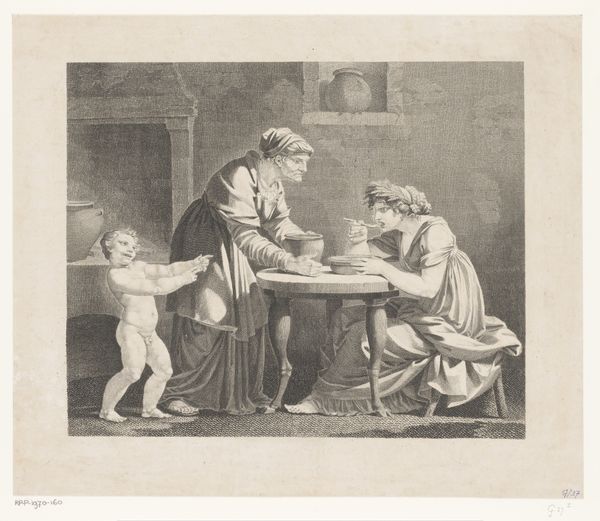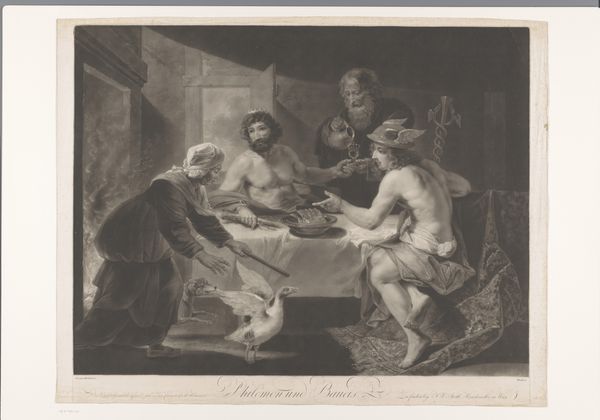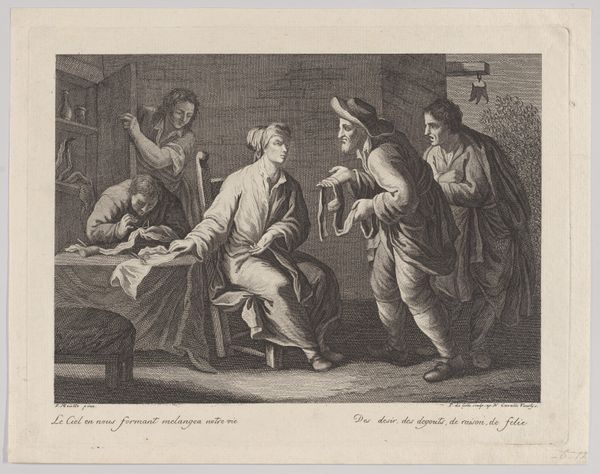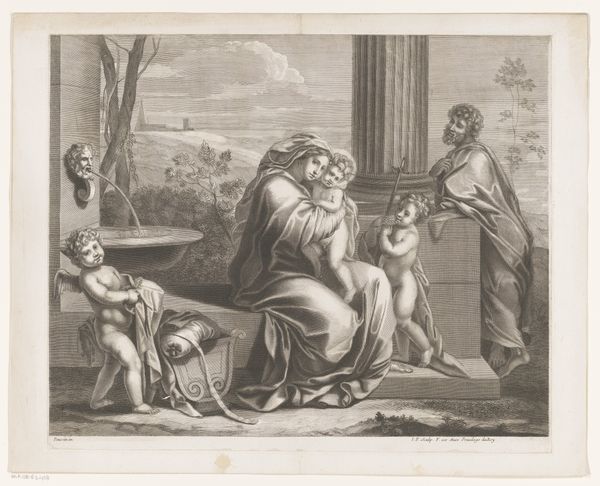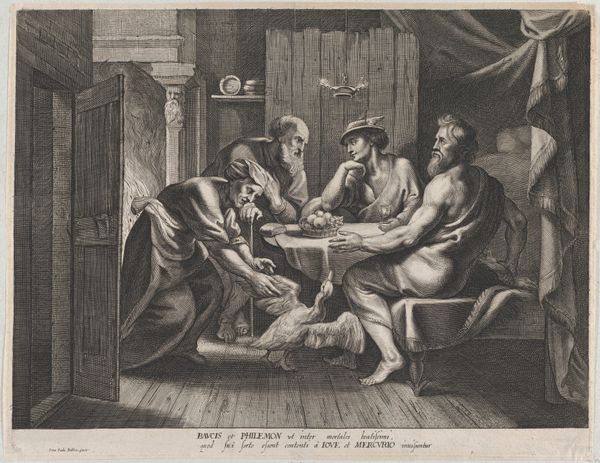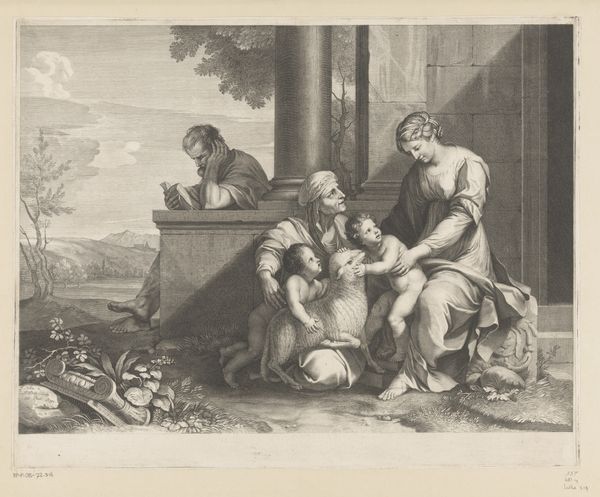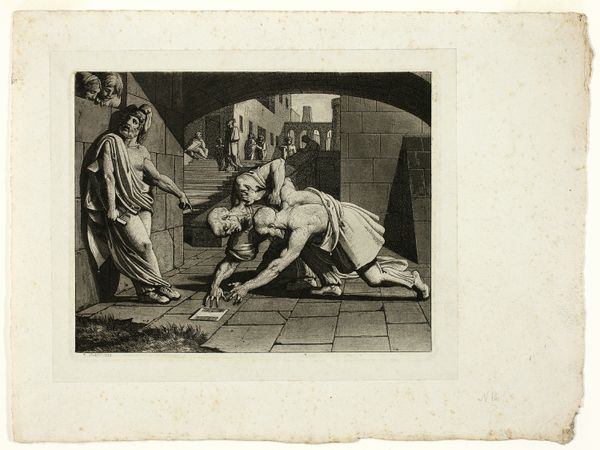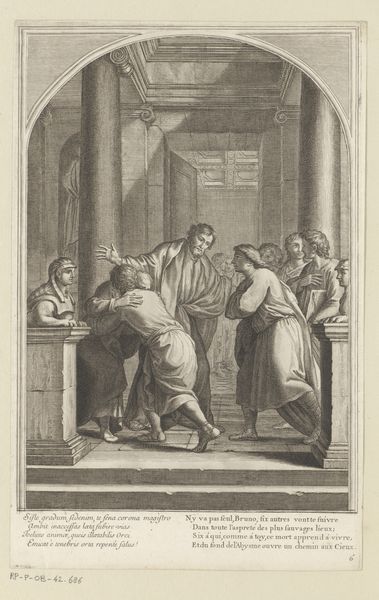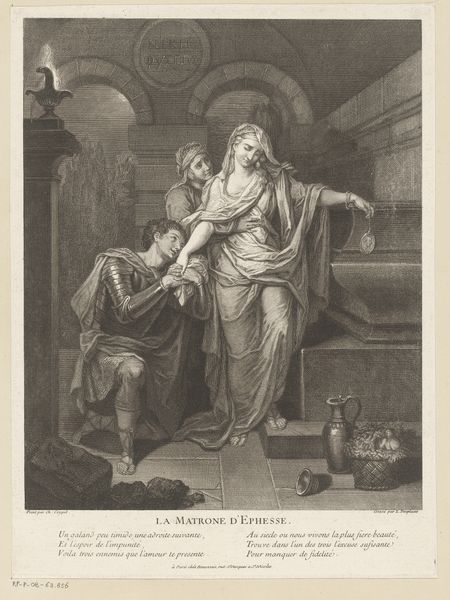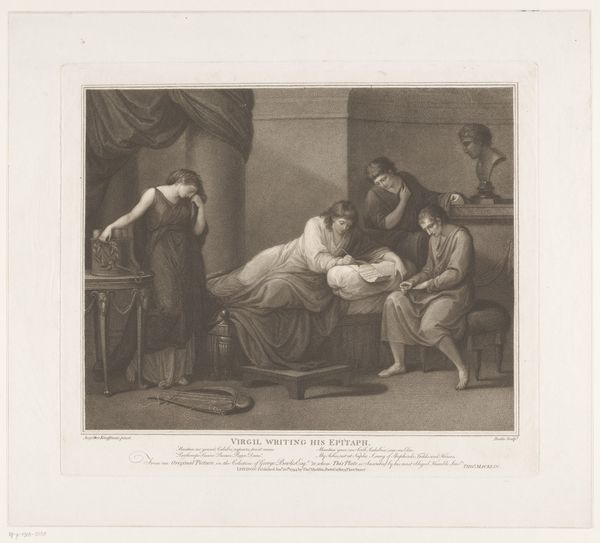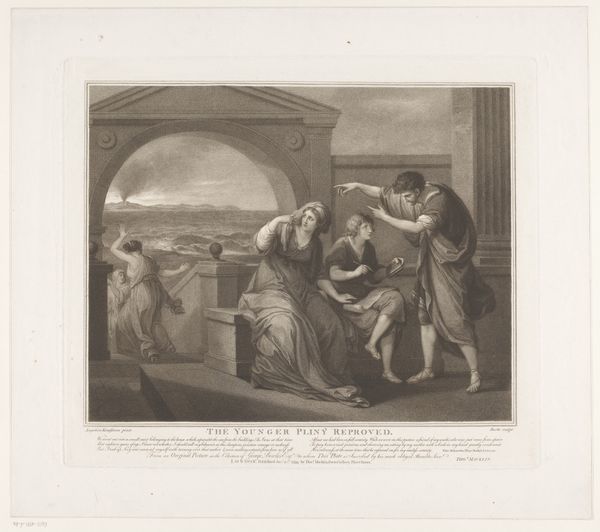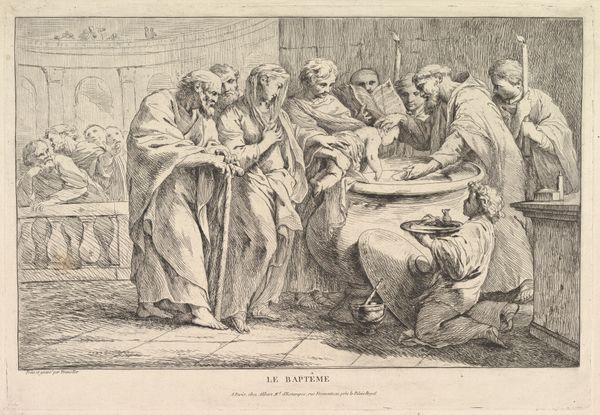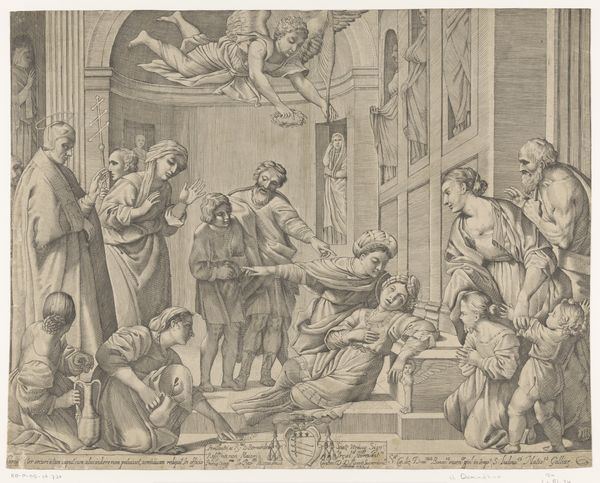
print, engraving
#
neoclacissism
#
allegory
#
narrative-art
# print
#
classical-realism
#
figuration
#
historical photography
#
19th century
#
genre-painting
#
history-painting
#
engraving
Dimensions: height 323 mm, width 351 mm
Copyright: Rijks Museum: Open Domain
Editor: This engraving, "Bespotting van Ceres," made after 1795 by Jacques Louis Copia, depicts a scene of classical realism with three figures. It feels very staged and formal, not exactly inviting. How do you interpret the symbolic weight of the scene? Curator: It is intriguing, isn’t it? Consider Ceres, the Roman goddess of agriculture, shown here being mocked, which carries substantial cultural memory. The Neoclassical style aims to evoke virtues of the ancient world. How does the presence of the child – presumably Cupid – influence your perception of the allegory? Editor: I suppose it adds an element of cruelty; a spoiled child defiling something sacred. It's odd— I wouldn’t have expected that interpretation. Curator: Indeed. Recall that Ceres's role was vital – the cycle of crops determined the well-being of communities. The act of spoiling could thus symbolize something broader: ingratitude or wastefulness towards the very things that sustain us. What continuities do you notice with contemporary attitudes towards environmental stewardship? Editor: I see what you mean. Maybe that's why it feels so unsettling – this disrespect is still relevant. It hits differently now that you point out the cultural weight. Thanks. Curator: And thank you. Reflecting on these classical images helps us view our current challenges through a rich symbolic lens.
Comments
No comments
Be the first to comment and join the conversation on the ultimate creative platform.
